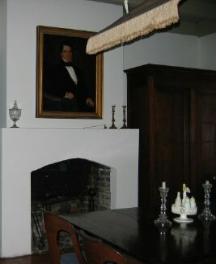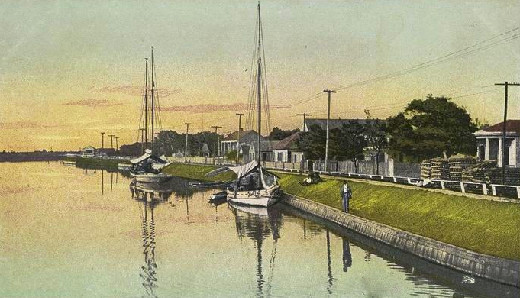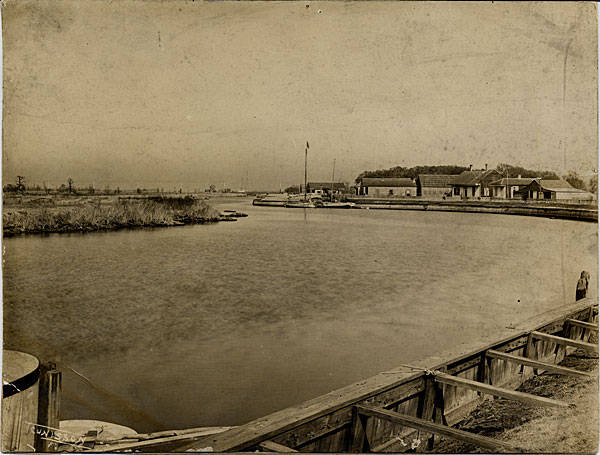
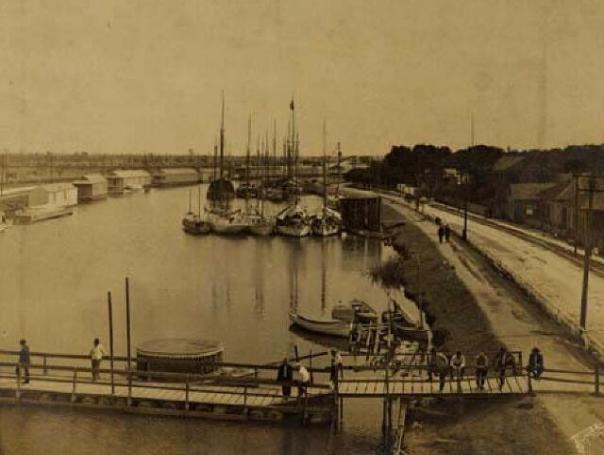
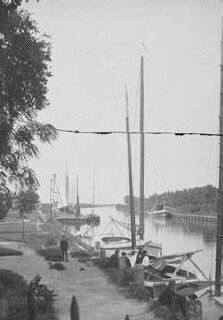
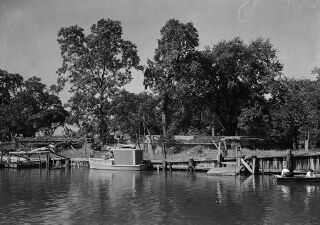
| Bayou St. John: Flowing Through the Heart of the City |
| Above and below, Bayou St. John, 1905 |
| Postcard, "Evening on Bayou St. John," 1903 |
| Boats docked on Bayou St. John at Spanish Fort Amusement Park; photo taken between 1890-1915. |
| Boats on Bayou St. John docked at Spanish Fort, 1934. |
| 1915 postcard, "Spanish Fort and Bayou St. John by Moonlight" |
| The link to this page is: http://old-new-orleans.com/NO_BayouStJohn.html Other pages yolu might enjoy: Fort San Juan del Bayou: Early Days Old Spanish Fort Resort & Amusement Park Spanish Fort Today Back to Old New Orleans Whispers - Home |
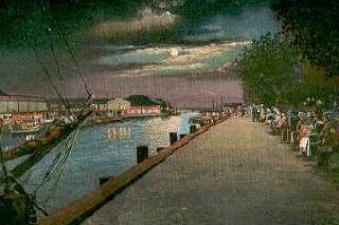
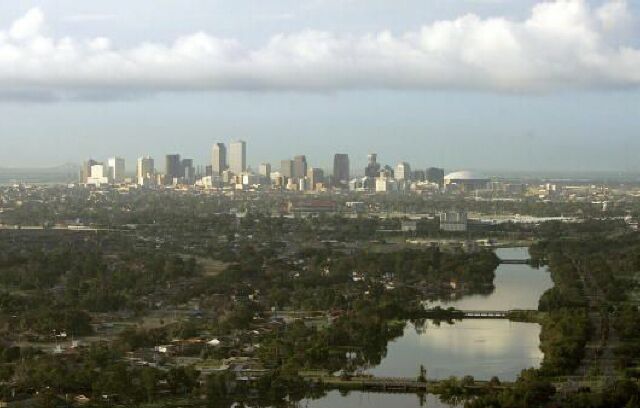
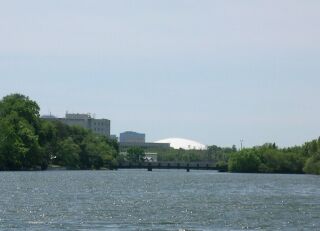
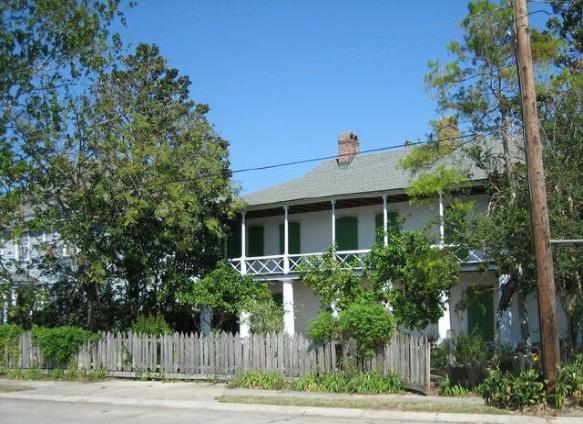
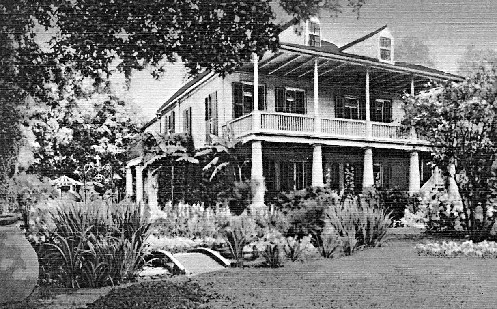
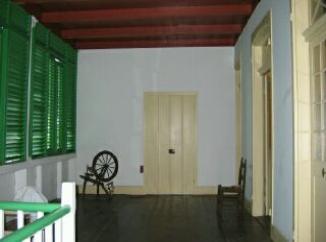
| Bayou St. John lighthouse was erected in 1811 and deactivated in 1878. |
| Only two houses built in the 1700's remain along Bayou St. John today. The Pitot home, above, was constructed in 1799. The one below, sometimes referred to as the "Spanish Custom House," was built in 1784. |
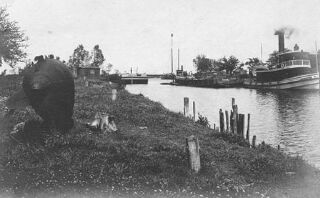
| The well-traveled Civil War era submarine, on the banks of Bayou St. John: In 1878, a dredge crew working in Lake Pontchartrain, at the mouth of Bayou St. John, recovered a Civil War era submarine and placed it on the banks of the Bayou. There it remained until 1895, when it was put on display at Spanish Fort, then a resort/amusement area. Eventually, it was removed and left abandoned and neglected, until, in 1908, it was moved to Camp Nicholls Confederate Home on Bayou St. John. In 1942, it was acquired by the Louisiana State Museum and taken to Jackson Square. A few years later, it was moved across the street to the lower Pontalba Building and, after that, in 1957, moved to the Presbytere. In 1999, it made its final move (so far) to the Louisiana State Museum Conservatory. |
| French explorer, Jean-Baptiste Le Moyne de Bienville, and his brother, Pierre Le Moyne d'Iberville, first entered Bayou St. John from Lake Pontchartrain in 1699, and the rest, as they say, is history. The Mississippi River is closely identified with the story of the city's settlement, but there's no way to exaggerate the importance of Bayou St. John, along with its portage trail, to the development of the area. The Bayou connected Lake Pontchartrain (and its access to the Gulf of Mexico) with the Mississippi River. Native Americans had used the waterway, which they called "Bayouk Choupic," since pre-Columbian times. In fact, Bienville chose the location of "Nouvelle Orleans" because of the site's proximity to the Bayou, as well as, the sharp crescent in the River there, which he believed would help protect the settlement from storms. The construction of dwellings at the site on the Mississippi River began in 1718, but concessions had already been granted along Bayou St. John as early as 1708, and it wasn't long before all of the land along the length of the Bayou held dwellings ranging from small huts to substantial homes. Today, Bayou St. John is a recreational waterway, much appreciated for its beauty and its atmosphere, as it flows peacefully through the heart of the city. Nancy |
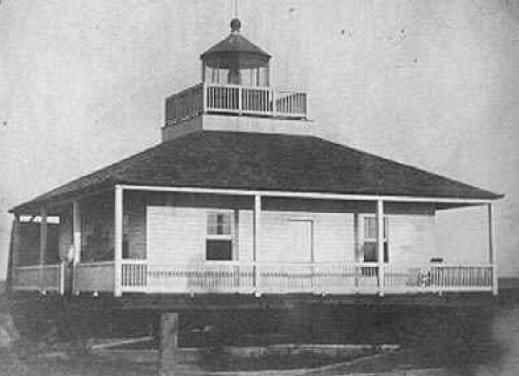
| Modern day view of Bayou St. John; the Superdome can be seen in the background. |
| Bayou St. John, New Orleans |
